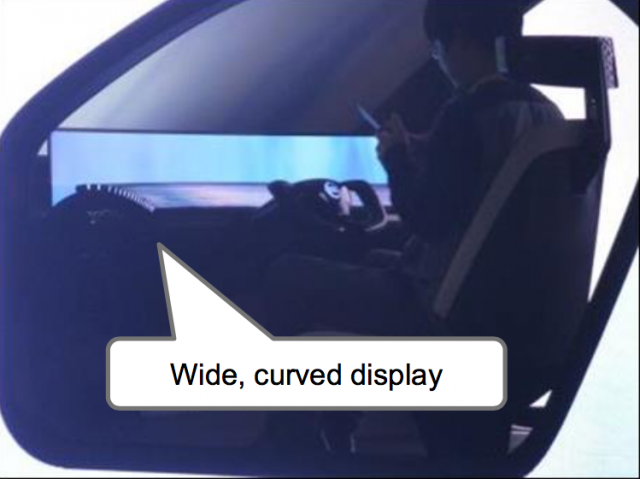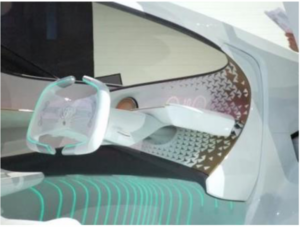In case you missed it, from the last week in October to early November Tokyo, Japan turns that nation’s love of cars to reality and beyond with the week long Auto extravaganza AKA “The Tokyo Motor Show (TMS).” This year offered future designs and concept cars that bring a vision of the future direction of displays in the ultimate mobile device category, the automobile. Here’s a brief review of the IHS Markit coverage of the show with links to their full report.

Two top considerations for the coming cars according to IHS Markit evaluation include the idea of moving away from a series of smaller single function displays like the DID (driver information display) or CSD (center stack displays) that focused on driver system data and HVAC – entertainment respectively. This approach will give way to full display dashboards, that IHS said will be common in next-generation vehicles.
This iAlso specific to displays, the group also sees the move to full TFT LCD’s being shipped as “standard equipment” in cluster units for new vehicle models that ship in the interim. A high percentage of these will ship with touch interface, along with gesture and eye tracking becoming more prevalent with time. IHS Markit also noted car companies will feature multifunction displays and multiple display monitors, calling them “necessary equipment for monitoring safety and fuel economy.”
In the race to self driving vehicles, Toyota is considered a leader in this direction with its “Concept-i series”, a cluster of integrated systems using advanced artificial intelligence (AI system) with “deep learning techniques monitoring the behavior (habits) of the driver. For example, tracking eye movements, facial expression and gestures, (in iPhoneX like fashion) can lead to very accurate predictions regarding the state of the driver, alert vs. sleepy, focused vs distracted, calm vs emotional (road rage) etc. (Wow, finally a car that can shut down that road rage guy that keeps honking with some strange hand gesture, at my slow driving… Ha!)
This year marked the 45th year for This INITotyttthe Tokyo Motor Show with over 750K visitors over the eleven day event. TMS 2017 reflected the trends toward self-driving vehicles and eco-cars. TMS saw the introduction of all new concept cars and production vehicles with a distinct focus on driver support that boarders on fully self-driving systems. This along with hybrid or electric cars that change the need for automotive system space in the vehicle, freeing up space for more entertainment and leisure based products and components.
Concept self-driving and driving assisted cars using full curved dashboard at Tokyo Motor Show in Nov 2017, Source: IHS Markit
So look to the next generation of autonomous self driving vehicles with consideration going beyond displays in vehicle systems monitoring and situation analysis, moving the display front and center in advance of fully autonomous vehicles where the driver will have very little more to do than monitor (and in my case pray) for a safe arrival. Stephen Sechrist
 For passengers (and the former driver) window displays will become common as shown in this TMS Concept car, Source IHS Markit 2017
For passengers (and the former driver) window displays will become common as shown in this TMS Concept car, Source IHS Markit 2017

This wide curved display in concept car shown at TMS 2017, source IHS Markit
Personalised Displays Could be a Differentiator in Cars
Renesas Gets Boost from Automotive Sales
Panasonic Gains Sales From Automotive Business
Renesas Brings 3D To Entry Level Cars
More Details Emerge On Mitsubishi Emirai 4 Concept Car
System Plus Releases Analysis Report on LG Automotive Display

